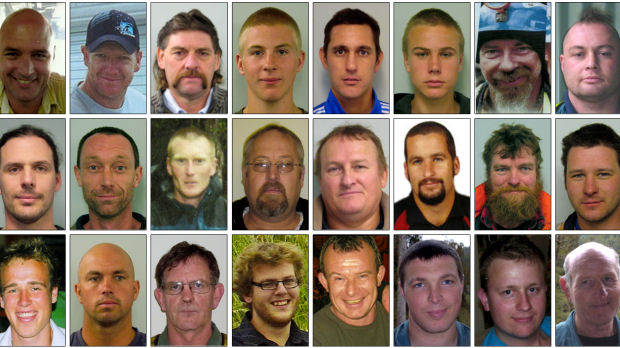New Zealand mine: ‘No survivors’ after second blast
All 29 people, including two Britons, trapped in a New Zealand coal mine are presumed dead after a second explosion. Rescue teams have now begun a recovery, police say.
Police broke the news to families of those trapped after a second explosion underground ripped through the Pike River coal mine on New Zealand’s South Island.
Superintendent Gary Knowles said none of the 29 workers would have survived the second explosion which was “as severe as the first blast” which trapped the miners last Friday.
There had been no contact with the workers since the incident. Britons Pete Rodger, 40, from Perthshire, and Malcolm Campbell, 25, from St Andrews, Fife, were among the men missing.
Rescue teams had been unable to go into the mine after the original incident due to high levels of toxic gases.
Recovery operation
Mr Knowles said he broke the news to the families of the victims who were “extremely distraught”.
“Today there was another massive explosion underground and based on that explosion no-one would have survived. We are now in recovery mode,” Mr Knowles said.
“The blast was horrific – just as severe as the first blast.
“Based on the expert advice I have been given it’s our belief there would have been no survivors.
“I had to break the news to the families and they were extremely distraught.”
Condolences
The Queen said today she was “deeply saddened” by the news that the miners were now presumed dead.
Foreign Secretary William Hague sent his condolences to the families of the miners in a statement released. Mr Hague said the UK High Commission in New Zealand and consular officials in London had been in close contact with the families of Mr Rodger and Mr Campbell since Friday afternoon.
“We are doing all we can to support them at this time of terrible loss,” he said.

Nation in mourning
The chief executive of the South Island mine, Peter Whittal, said his company would make every effort to retrieve the bodies of the men.
New Zealand Prime Minister John Key said the nation was in mourning.
“Where this morning we held on to hope, we must now make way for sorrow,” he said.
“Our heartfelt sympathy goes out to the families of these 29 brave men.
“After days of waiting and preparing for the worst and hoping for the best, they have been delivered the cruellest of news.”
Gas explosion
Explosive methane is believed to have caused Friday’s blast and mine workers have stressed that the second explosion was not caused by the rescue effort.
Rescuers had become increasingly pessimistic about the chances of finding the men alive in the network of tunnels one and a half miles deep.
A drilling team broke through yesterday to the section of mine where the men were working but was greeted by a blast of potentially deadly gases.
Hot air and gas rushed the hole when the chamber roof was punctured and Mr Whittall said initial tests showed it was “extremely high in carbon monoxide, very high in methane and fairly low in oxygen”.

Two workers stumbled out of the mine within hours of Friday’s explosion, but there was no contact with the remaining men – 24 New Zealanders, two Australians, the two Britons and a South African.
A phone line deep inside the mine also rang unanswered.
Rescuers used a diamond-tipped drill to bore through layers of hard rock to get closer to tunnels where some of the miners were thought to be trapped.
The missing men, aged 17 to 62, carried 30 minutes of oxygen, and more fresh air was stored in the mine, along with food and water.
Officials said that provisions allowed for several days of survival.
The mine is not far from the site of one of New Zealand’s worst mining disasters – an underground explosion in the state-owned Strongman Mine on January 19 1967, which killed 19 workers.
The country’s worst disaster was in 1896, when 65 died in a gas explosion which also occurred in the same Pike River coal seam.
-
Latest news
-
Taylor Swift’s new break-up album breaks records3m

-
NHS trust fined £200K for failings that led to death of two mental health patients3m

-
Sunak vows to end UK ‘sick note culture’ with benefit reform3m

-
‘Loose talk about using nuclear weapons is irresponsible and unacceptable’, says head of UN’s nuclear watchdog3m

-
‘There wasn’t an Israeli attack on Iran,’ says former adviser to Iran’s nuclear negotiations team7m

-




